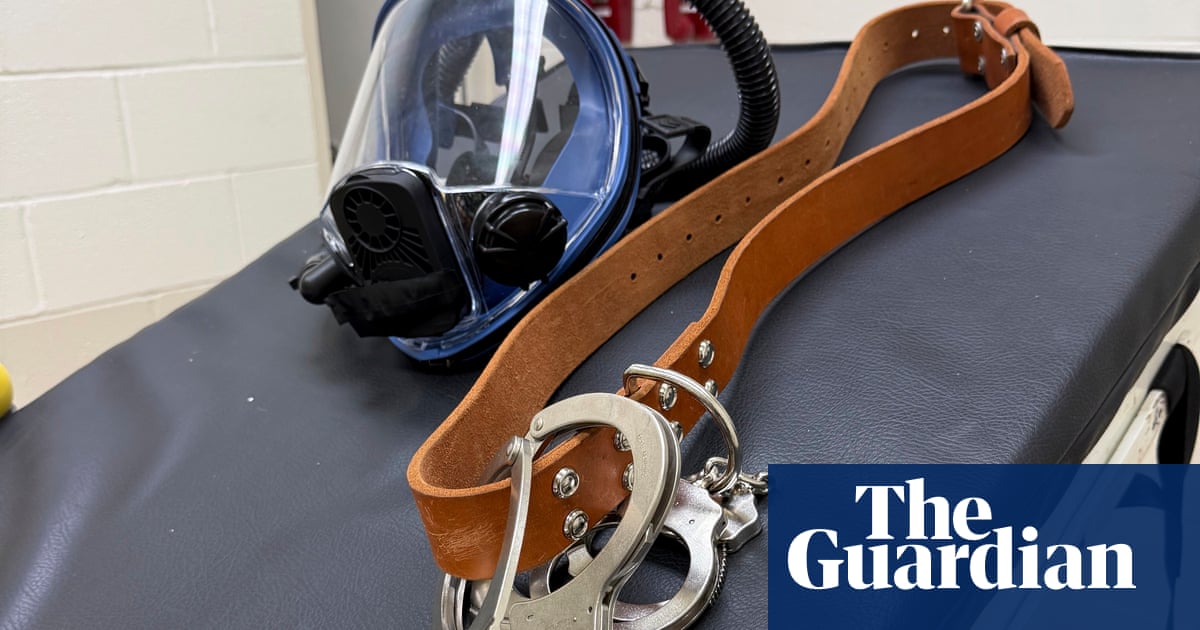Louisiana has carried out its first execution using nitrogen gas, an experimental method for judicial killings that has only been used by one other death-penalty state.
Jessie Hoffman Jr, 46, was executed at the Louisiana state penitentiary at Angola shortly after 7pm local time on Tuesday evening. He had been convicted of the 1996 rape and murder in New Orleans of Mary Elliott, a 28-year-old advertising executive.
Last-minute appeals for a reprieve failed when the US supreme court declined to take Hoffman’s petition. The court had similarly refused to intervene in the earlier nitrogen executions carried out by Alabama.
Five of the six rightwing supreme court justices voted to allow the execution to proceed, with the three liberal-leaning justices saying they would have halted it. The sixth conservative, Neil Gorsuch, said he would have stayed the killing to give time to consider Hoffman’s religious objections.
Hoffman’s death marks the resumption of capital punishment in Louisiana. The state last carried out an execution 15 years ago.
It also marks the spread of the controversial technique of nitrogen gas as a killing method. Hoffman’s lawyers had argued that the procedure, which involves piping pure nitrogen through a gas mask to induce fatal oxygen deprivation, would violate the prisoner’s constitutional rights by inflicting cruel and unusual punishment.
The four previous executions carried out using nitrogen in Alabama led to distressing scenes in the death chamber. Eyewitnesses reported that Kenneth Smith shook violently, and writhed and convulsed on the gurney.
Hoffman’s lawyers also argued that death by nitrogen hypoxia – forcing the condemned man to breathe only nitrogen – would interfere with his religious practices as a Buddhist. They said that meditative breathing at the time of death was integral to the religion.
Louisiana also faces questions about how it got hold of the nitrogen used in Hoffman’s execution. Last year, the Guardian revealed that three of the biggest manufacturers of medical-grade nitrogen in the US had put a block on their products being used in executions.
Airgas, Air Products and Matheson Gas all took steps to prevent their nitrogen from reaching departments of correction in death-penalty states.
Yet photographs put into the public record in ongoing litigation in Louisiana show that the corrections department obtained canisters of nitrogen gas produced by Airgas, in apparent contravention of the company’s strict rules. In a statement to the Guardian, Airgas said that it had been in direct contact with the department of corrections to affirm its position.
“Airgas has not and will not supply nitrogen or other inert gases to induce hypoxia for the purpose of human execution,” the company said. “We have not supplied medical grade NF nitrogen and the facility does not have any such cylinders owned by Airgas, according to our records.”
The statement added: “The department of corrections in Louisiana has acknowledged our letter prohibiting the use of any nitrogen for execution purposes.”
Before the execution went ahead, the sister-in-law of Hoffman’s victim called for him to be pardoned. “Executing Jessie Hoffman is not justice in my name, it is the opposite,” Kate Murphy wrote.
Earlier on Tuesday Arkansas became the fifth state to adopt nitrogen hypoxia as an execution method, after Louisiana, Alabama, Mississippi and Oklahoma. Arkansas currently has 25 people on its death row.
